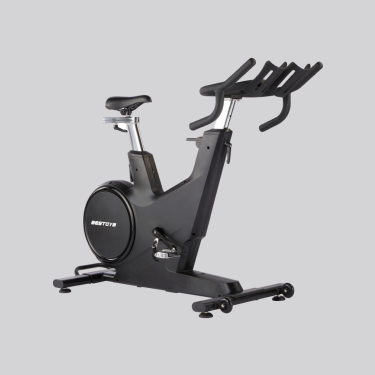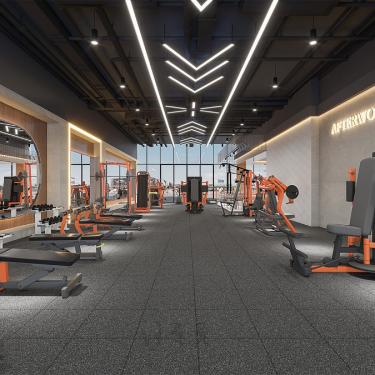Corporate Gym: What You Need to Know
Introduction
In the modern corporate landscape, employee wellness is no longer viewed as a luxury—it has become a necessity. Businesses today are competing not just in markets but also for talent, and one of the most effective ways to attract and retain top employees is by offering comprehensive wellness programs, including corporate gyms. These fitness facilities have evolved from simple office perks to powerful tools for improving employee well-being, boosting productivity, and reducing healthcare costs. Whether it's a state-of-the-art on-site gym, a partnership with local fitness centers, or a fully integrated virtual wellness platform, corporate gyms are reshaping the way companies approach employee health.
This guide will provide an in-depth look at everything you need to know about corporate gyms: their purpose, benefits, common models, implementation strategies, challenges, and future trends. Whether you are an HR professional, a business owner, or an employee curious about maximizing this benefit, this article is your comprehensive resource.

1. What is a Corporate Gym?
A corporate gym is a fitness and wellness facility provided by an organization for the exclusive or prioritized use of its employees. The concept can take several forms depending on the size, budget, and wellness goals of the organization.
On-site corporate gym: A full-service gym located within the company's premises, allowing employees to work out conveniently during the workday.
Off-site corporate gym partnerships: The company partners with local gyms, wellness centers, or fitness chains to offer discounted or free memberships to employees.
Virtual wellness platforms: In the age of remote and hybrid work, many companies now offer access to virtual fitness classes, wellness apps, and online coaching to support employees regardless of their location.
Corporate gyms are often part of a broader corporate wellness program that may include mental health resources, stress management workshops, ergonomic consultations, and nutrition counseling.
2. The Rise of Corporate Wellness Programs
The increasing awareness of employee well-being's direct impact on organizational performance has fueled the rise of corporate wellness programs. In a competitive business environment, companies that prioritize employee health enjoy significant advantages:
Higher productivity: Healthy employees are more energetic, focused, and engaged.
Reduced absenteeism: Regular exercise and wellness practices reduce the risk of illness, lowering absenteeism rates.
Lower healthcare costs: Prevention is more cost-effective than treatment, and healthier employees generate fewer healthcare claims.
Enhanced company culture: A culture that values well-being fosters collaboration, positivity, and loyalty.
Reports from organizations like the Global Wellness Institute show that companies investing in wellness programs see a measurable return on investment, not only in financial terms but also in employee satisfaction and retention.
3. Benefits of a Corporate Gym for Employees
Convenience and Time-Saving
Corporate gyms, especially on-site facilities, eliminate the need for employees to commute to external gyms. They allow employees to fit workouts into their busy schedules—before work, during lunch breaks, or after office hours.
Improved Physical Health
Corporate gyms promote healthier lifestyles, reducing the risk of chronic diseases such as obesity, diabetes, and heart disease. Regular exercise helps maintain healthy body weight, improves cardiovascular health, and boosts overall physical well-being.
Mental Health Support
Exercise is known to reduce stress, anxiety, and depression by releasing endorphins. Having a gym readily accessible helps employees manage work-related stress and supports their mental health.
Work-Life Balance
By integrating exercise into the workday, employees can achieve better work-life balance. Instead of sacrificing personal time for fitness, employees can fulfill their wellness needs within their daily routine.
Team Building and Social Engagement
Group classes, fitness challenges, and wellness workshops foster social connections among colleagues. These activities can enhance team dynamics and promote a positive, collaborative work culture.
4. Benefits of a Corporate Gym for Employers
Enhanced Productivity
Employees who engage in regular physical activity experience improved concentration, memory, and problem-solving skills. They are also more resilient to workplace stress.
Recruitment and Retention
Corporate gyms serve as attractive benefits when recruiting talent. Employees are increasingly seeking workplaces that prioritize health and wellness, and companies offering these perks have a competitive edge.
Reduced Absenteeism
Fewer sick days mean fewer disruptions to workflow and reduced costs related to temporary staffing or lost productivity.
Lower Healthcare Costs
Healthier employees file fewer medical claims, leading to significant savings on health insurance premiums and employee benefit programs.
Strengthened Employer Brand
Companies with corporate gyms demonstrate a commitment to employee well-being, enhancing their reputation both internally and externally.

5. Common Features of a Corporate Gym
Corporate gyms vary in scale and offerings, but common features include:
- Cardio equipment: Treadmills, ellipticals, rowing machines, and stationary bikes.
- Strength training: Free weights, cable machines, resistance bands, and squat racks.
- Functional fitness areas: Yoga mats, kettlebells, medicine balls, and stretching zones.
- Group exercise studios: Spaces for classes such as yoga, HIIT, Zumba, spinning, and Pilates.
- Locker rooms and showers: Essential for employees who exercise during the workday.
- Personal training and coaching: Some gyms offer personal training services, either in-person or virtually.
- Wellness workshops: Nutritional counseling, mindfulness sessions, and stress management programs.
6. Types of Corporate Gym Models
On-Site Corporate Gym
These gyms are located within company premises and provide maximum convenience for employees. They vary from basic fitness rooms to fully equipped wellness centers.
Off-Site Corporate Partnerships
In this model, companies partner with local gyms or national fitness chains to provide discounted or subsidized memberships for employees.
Virtual Fitness Platforms
For companies with remote or hybrid workforces, virtual fitness programs are invaluable. Employees can access online classes, personal training, wellness webinars, and fitness tracking tools.
Hybrid Model
Combining on-site, off-site, and virtual solutions ensures all employees, regardless of their work location, have access to wellness resources.
7. How to Implement a Corporate Gym Successfully
Conduct a Needs Assessment
Survey employees to understand their fitness preferences, schedule flexibility, and desired programs.
Define Clear Goals
Determine whether the objective is to enhance employee engagement, reduce healthcare costs, boost productivity, or a combination of these.
Budget Planning
Outline all expenses, including space renovations, equipment, staffing, and ongoing maintenance.
Design the Facility
Work with fitness consultants to create an appealing, safe, and functional space that encourages regular use.
Select Equipment
Choose a balanced mix of cardio, strength, and flexibility equipment based on employee interests and space availability.
Develop Policies and Guidelines
Establish usage policies to ensure safety, proper maintenance, and fair access.
Launch and Promote
Organize a grand opening, offer introductory classes, and promote the gym through internal communication channels.
Monitor and Improve
Regularly collect feedback to adapt programs, upgrade equipment, and introduce new wellness initiatives.
8. Challenges and Solutions
Underutilization
Employees may not use the gym due to lack of time, motivation, or awareness. Solution: Offer flexible hours, create engaging fitness challenges, and provide incentives for participation.
Budget Constraints
Developing a corporate gym requires significant investment. Solution: Start with a smaller facility and scale up, or opt for partnerships with external gyms.
Liability and Safety
Accidents or injuries can raise legal concerns. Solution: Implement safety training, require waivers, and hire certified fitness professionals.
Maintenance
Ongoing maintenance is essential for safety and member satisfaction. Solution: Allocate part of the budget for regular maintenance and equipment upgrades.
9. Best Practices for Employees Using a Corporate Gym
Stay consistent: Regular workouts yield the best results.
Engage in group classes: These classes enhance motivation and offer social interaction.
Respect gym etiquette: Clean equipment after use, follow rules, and be mindful of others.
Set achievable goals: Track progress and celebrate small victories.
Balance work and wellness: Ensure that gym use complements rather than interferes with work responsibilities.
11. Trends in Corporate Gyms (2025 and Beyond)
Virtual and hybrid offerings are expected to expand, catering to remote and hybrid employees.
Mental health integration will continue to grow, combining physical fitness with mindfulness, meditation, and stress management.
Technology integration through smart fitness equipment, wearables, and AI-driven coaching will become standard.
Sustainability focus will lead to eco-friendly gym designs and energy-efficient equipment.
Inclusivity will ensure gyms are accessible and welcoming to employees of all fitness levels, ages, and backgrounds.
Conclusion
A corporate gym is more than just a room full of fitness equipment—it’s a statement about company values and a practical tool for enhancing both employee well-being and organizational performance. Whether you are an employer considering offering one or an employee thinking of joining a company with one, understanding the ins and outs of corporate gyms will help you make the most of this growing workplace trend.
Raed More: 8 Different Types of Leg Machines











